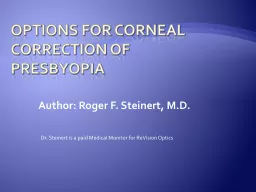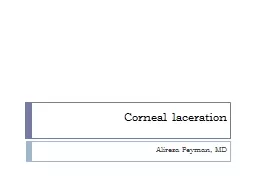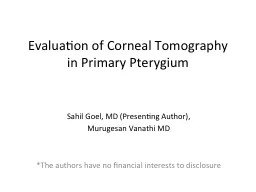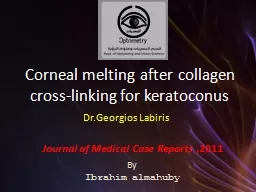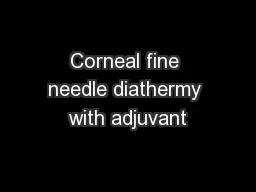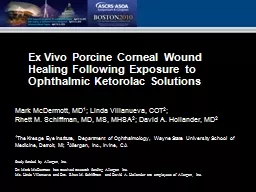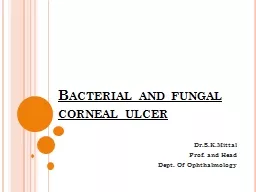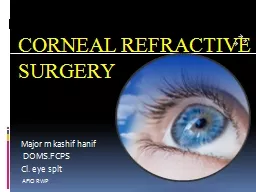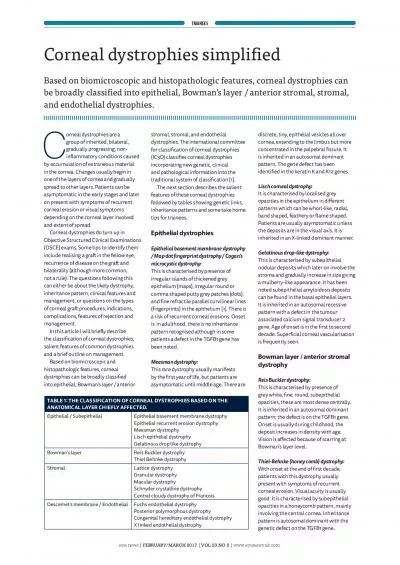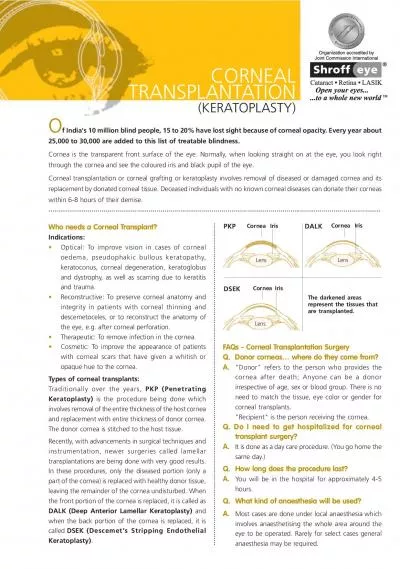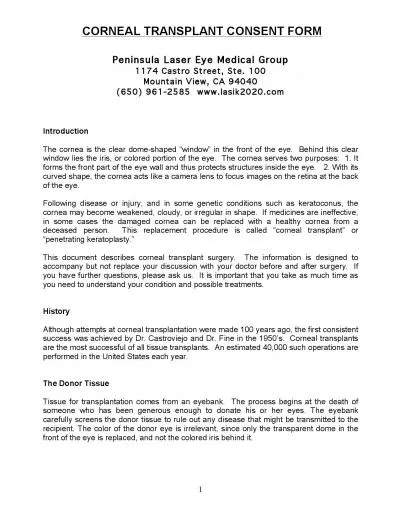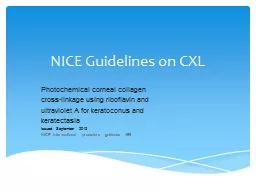PPT-Options For Corneal Correction of Presbyopia
Author : liane-varnes | Published Date : 2016-05-13
Author Roger F Steinert MD Dr Steinert is a paid Medical Monitor for ReVision Optics Methods Three Optical Approaches Near Power in Pupil Center Distance Power in
Presentation Embed Code
Download Presentation
Download Presentation The PPT/PDF document "Options For Corneal Correction of Presby..." is the property of its rightful owner. Permission is granted to download and print the materials on this website for personal, non-commercial use only, and to display it on your personal computer provided you do not modify the materials and that you retain all copyright notices contained in the materials. By downloading content from our website, you accept the terms of this agreement.
Options For Corneal Correction of Presbyopia: Transcript
Download Rules Of Document
"Options For Corneal Correction of Presbyopia"The content belongs to its owner. You may download and print it for personal use, without modification, and keep all copyright notices. By downloading, you agree to these terms.
Related Documents

